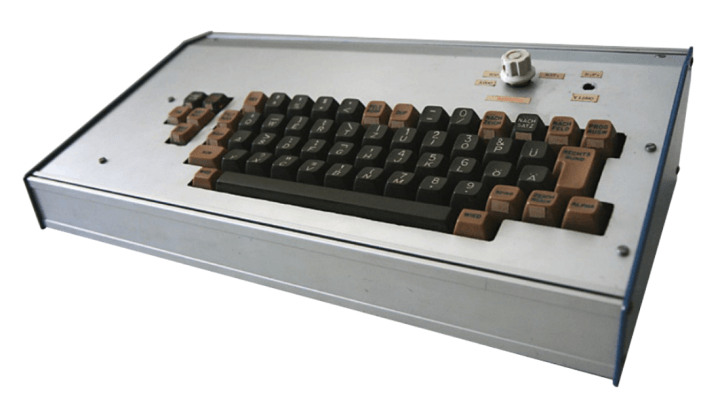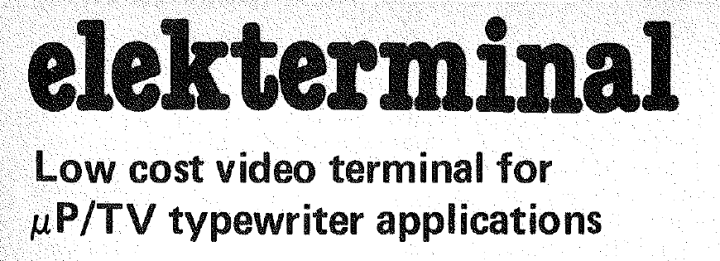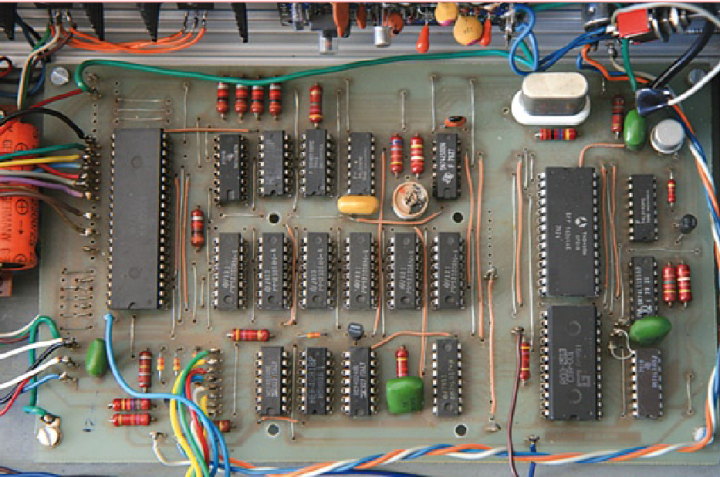elekterminal: An Affordable Way to Communicate
on
Back in December 1978, Elektor published a computer terminal for home construction. “DIY” was the success factor then since terminals with CRTs and a keyboard were in the realms of professional, central computing, big offices, and big money. For the first time, hobbyists saw an affordable way to communicate with their kitchen-table microprocessor in writing — comments and all. ASCII, Cherry & The Flashing Cursor had arrived on the scene and lasted for at least two decades.

The name “elekterminal” can be traced back to the progressive spelling used in Elektor’s Dutch left-wing, post-hippy editorial department in the mid and late 1970s. Capital letters, spaces, and spelling based on Latin and Greek were abolished, and the Dutch habit of concatenating nouns and adjectives into a single (long) word was exerted to the extreme. Also, you cram as much of “Elektor” or “Elektuur” as you can into that project name! Hence, no “Elektor Terminal” or “ElekTerminal”; elekterminal it was. In hindsight, “Elektuurminal” would have been funny as well as appropriate, but only for the Dutch audience.

_HELLO Through the AY-5-1013
The main components of the elekterminal were an SF.F 96364 (sic) CRT controller chip from Thomson-CSF (Sescosem), a bunch of 2102A 1 K × 1 static RAMs for the page memory, and the legendary AY-5-1013 UART a.k.a. MM5303 for the serial comms. In the logic glue between these parts, we find a 1024-bit ROM type SFC71301E. This turned out an exotic part for many readers at the time but fortunately, the PROM contents were printed in the magazine and the device may have been available from Elektor’s Software Service (ESS) at that time. Also, an equivalent was printed: the 74S387.

“Far Out Specs, Man”
The specifications of the elekterminal were summarized in the magazine as:
- 1024 characters per page, formatted as 16 lines × 64 characters.
- Plug-in option for expansion to 16 pages.
- Baud rates: 75, 110, 150, 300, 600, 1200.
- Serial interface options: 6- or 7-bit ASCII; even/odd/no parity; 1 or 2 stop bits.
- TTL or RS-232C voltage levels.
- Normal (white on gray) or inverted (black on gray) video signal.
- Sophisticated, hardware-driven cursor control and screen scrolling.
- Full-duplex or half-duplex mode.
- Only 21 ICs on the board.


All $$$, No _ERROR in 1978
Although not a pioneering device and essentially a “dumb VDU” (visual display unit), to hobbyists, the elekterminal opened the way to standardized, serial, communication with any computer system having a standard serial interface like RS-232 or even the 20 mA loop. Affordably.
The elekterminal was hugely successful right from the start. Its capabilities, especially the screen format and the 1200-baud “data speed,” may appear antediluvian in this day and age, but in fact, may have been at the root of any of that gigabit, 4K, 5G, or HyperTerminal stuff you’re using today, or aspiring to use.
As far as prototypes of the elekterminal are concerned, nothing has survived at Elektor since the Augean clearing out of the lab in 2006. That’s why the photos shown here are reproduced from Antoni Gendrou’s hilarious article on the elekterminal printed in the June 2010 installment of Elektor Retronics. I did see a perfectly built TV Typewriter though, on display in the Computer History Museum in Mountain View, California, back in 2014. Ah, the sound of those Hall-effect keys from the Cherry keyboard ...
Editor's Note: The photos were taken by Antoni Gendrau (Spain).
Questions or Comments?
Do you have any questions or comments about this article or retronics? Email the author at jan.buiting@elektor.com.


Discussion (5 comments)